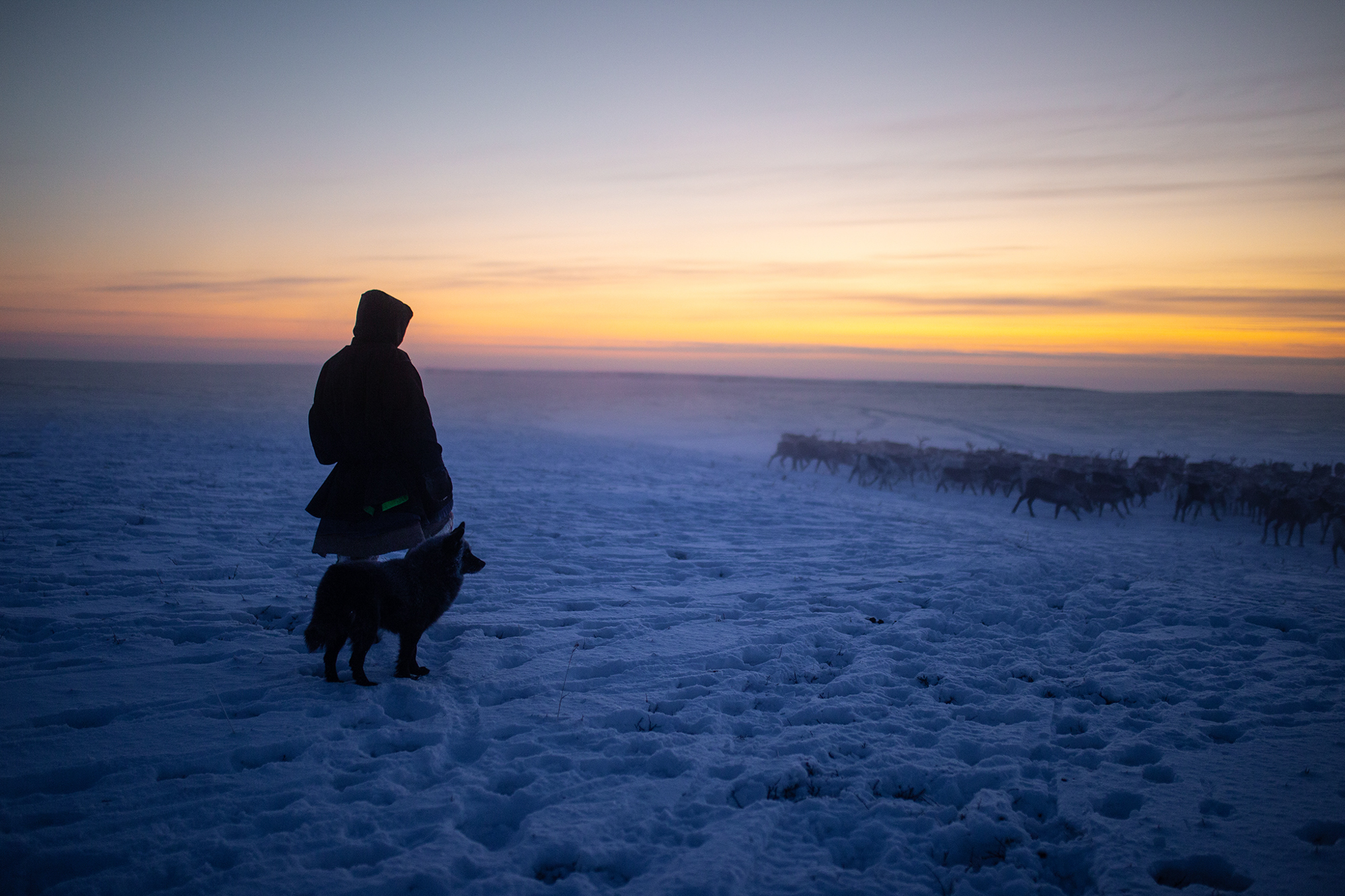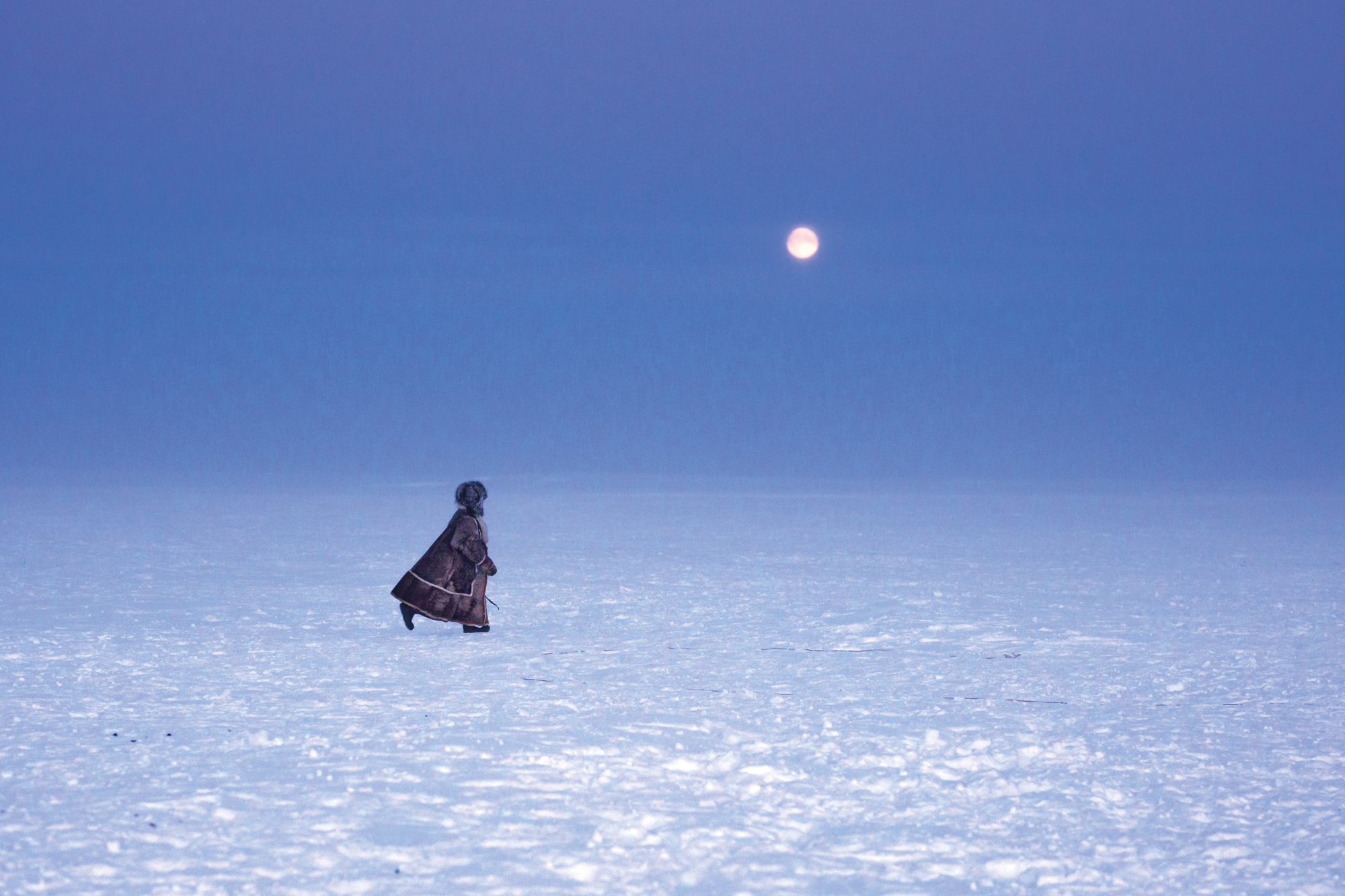Text: Ilaria Chiavacci
Photos: Gabriele Pedemonte
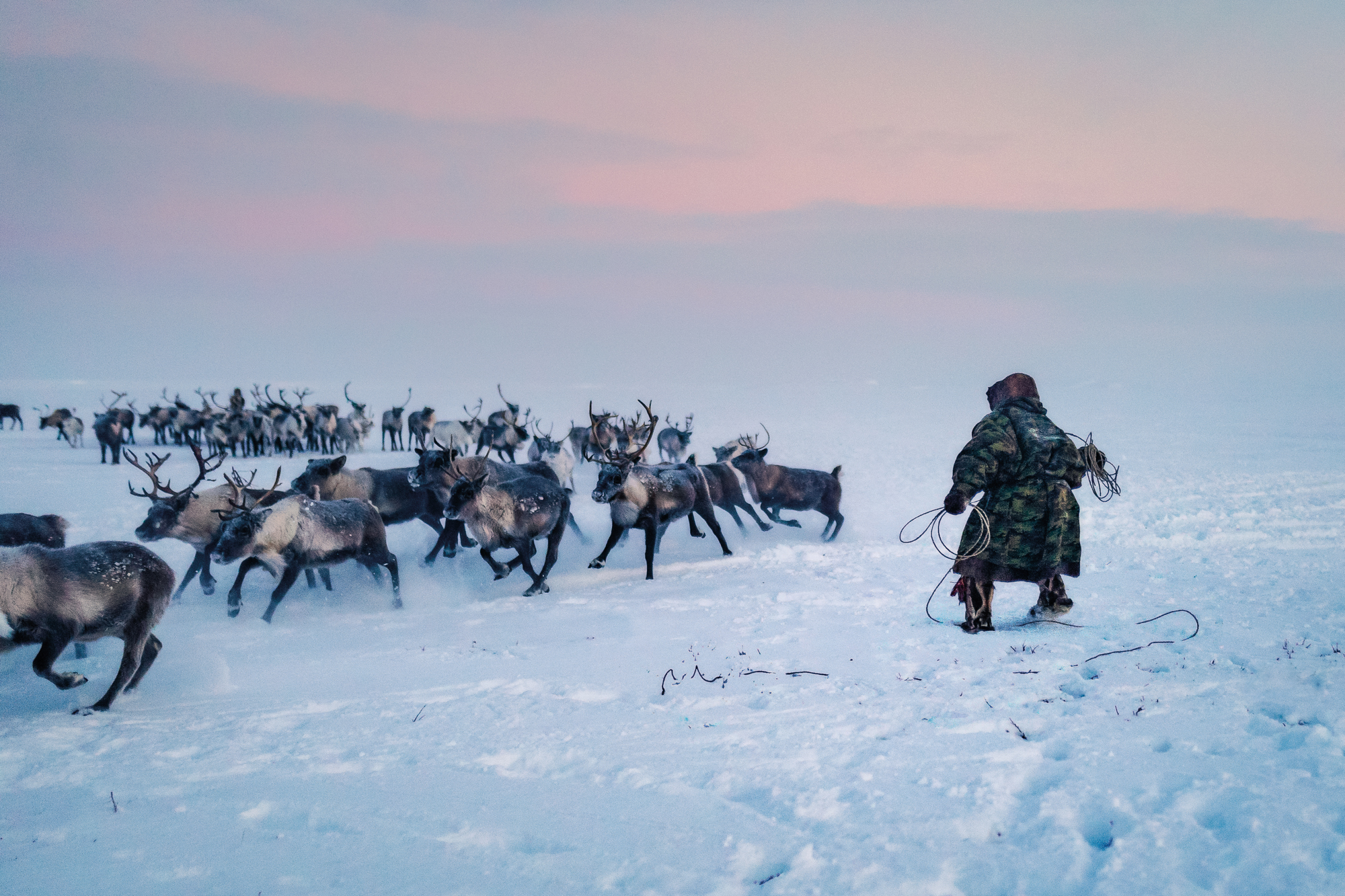
Nenets’ Lesson

To him, photography was initially a kind of therapy, then it became a passion and now it’s a need. The last border that photography led him to cross is the one of the harshest Siberia, where he met the Nenet nomads.
His shots are becoming increasingly popular among the lovers of travels and the outdoors, but for Gabriele Pedemonte photography is not a job, rather a therapy, a way to open the mind and heal the wounds of the soul. “I started shooting in 2014: I was going through a period of depression from which, in the end, if I got out it was mainly thanks to the camera. It is a passion that I have combined with my other great love: travelling, especially when that leads me to discover cultures that are very different from mine.”
Talent without passion would be useless but Gabriele has got both of them so much that, in less than ten years, he went from being a total stranger to participating in international exhibitions and seeing his shots published on the most important outdoor magazines. He only shoots during his expeditions and, after two years of stop due to the pandemic, that can be considered a good result: “What has always fascinated me in my expeditions is coming into contact with people who have lifestyles completely different from mine.” The great names from whom Gabriele takes inspiration have told through images the most fascinating and remote peoples of the earth: Sebastião Salgado, Steve McCurry and Jimmy Nelson. “I was also lucky enough to meet Jimmy Nelson years ago in Paris, on the occasion of an exhibition during which I was also exhibiting. They, in this specific niche, were pioneers, both from the point of view of travel photog-raphy and of making the life of certain populations known to the world.” That’s why for his latest expedition he chose Siberia: a land as beautiful as it is inhospitable where Nenets live, a nomadic population who live off fishing and reindeer breeding portrayed in the past by Nelson himself.
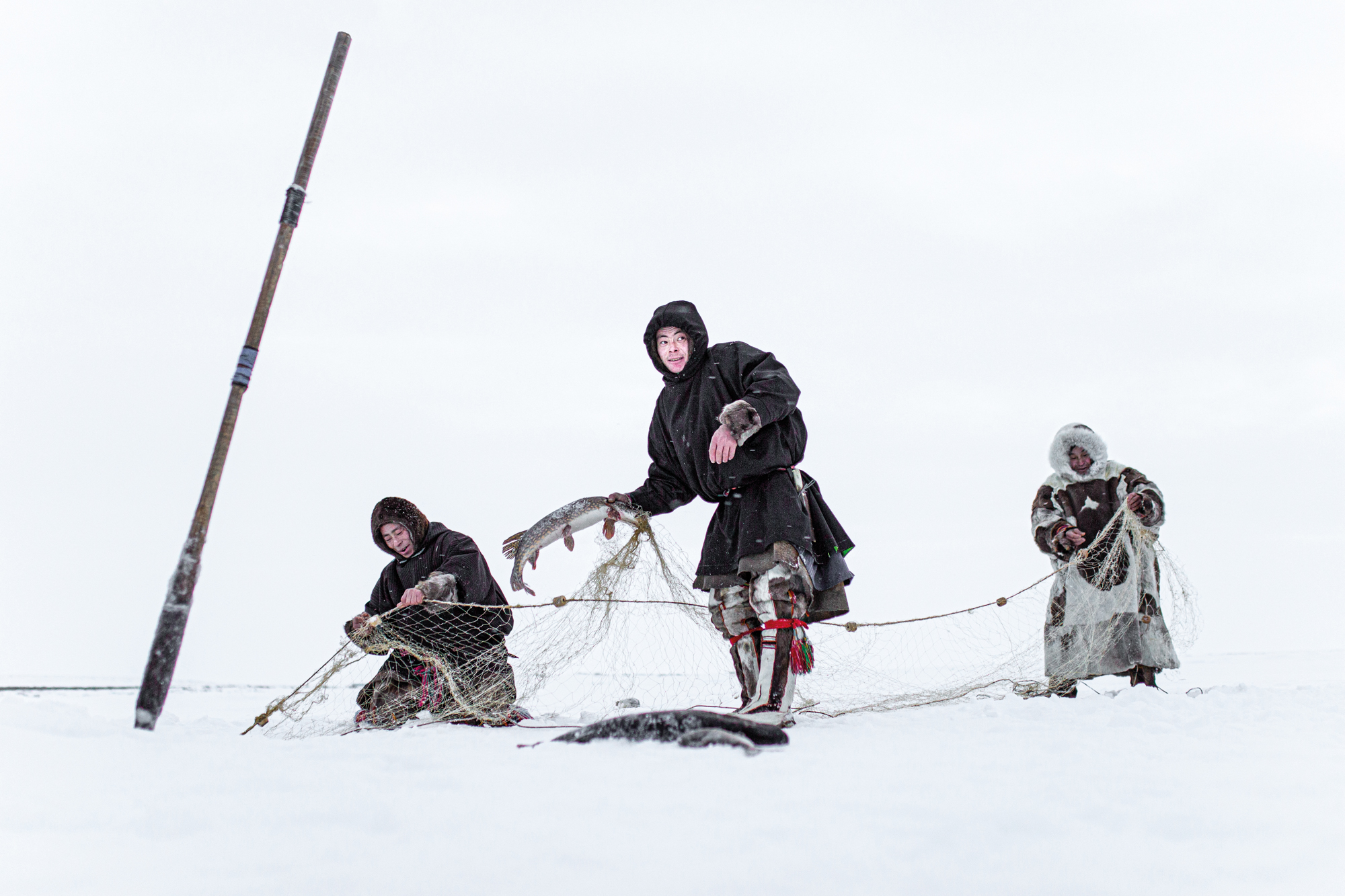
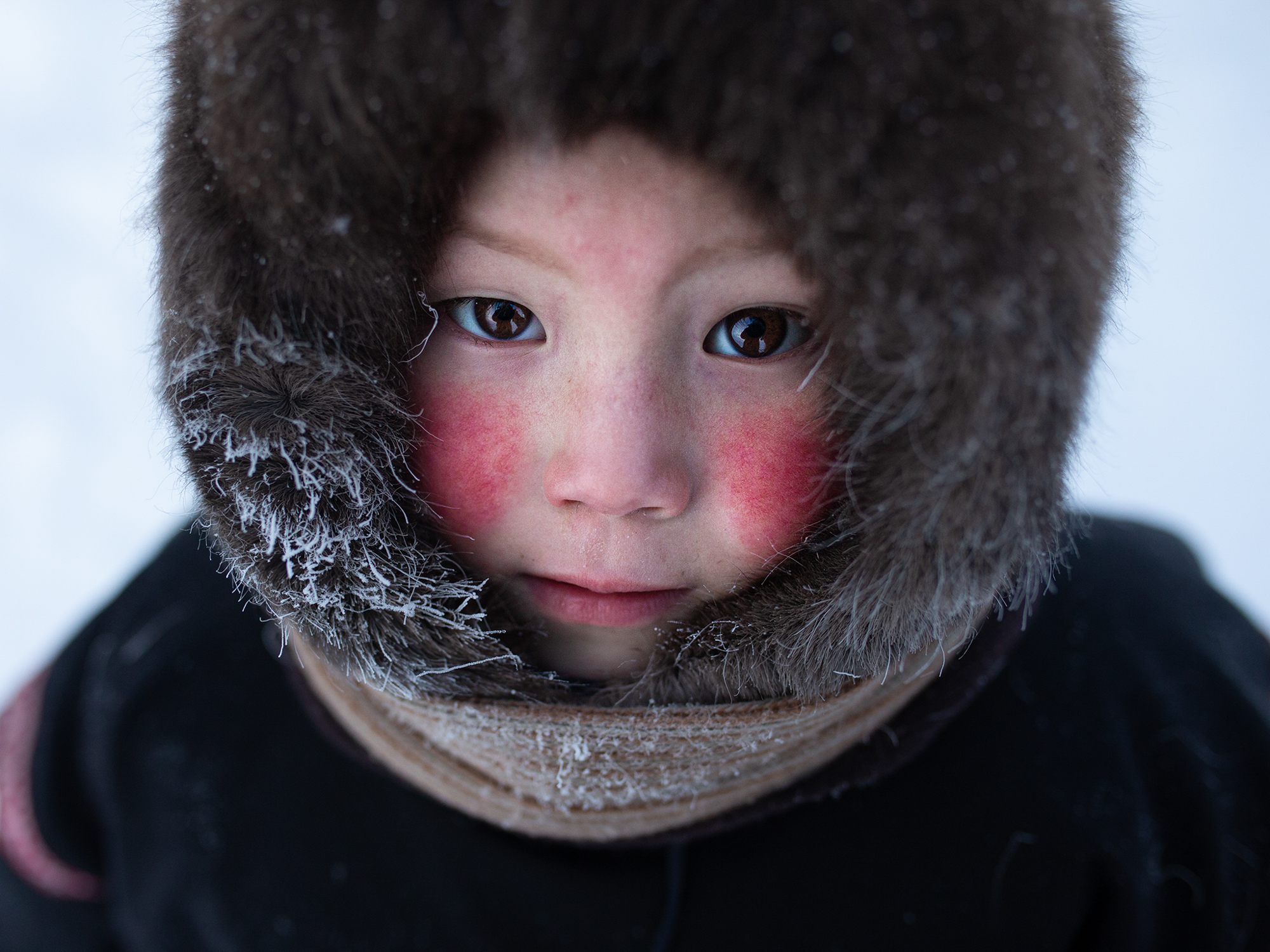
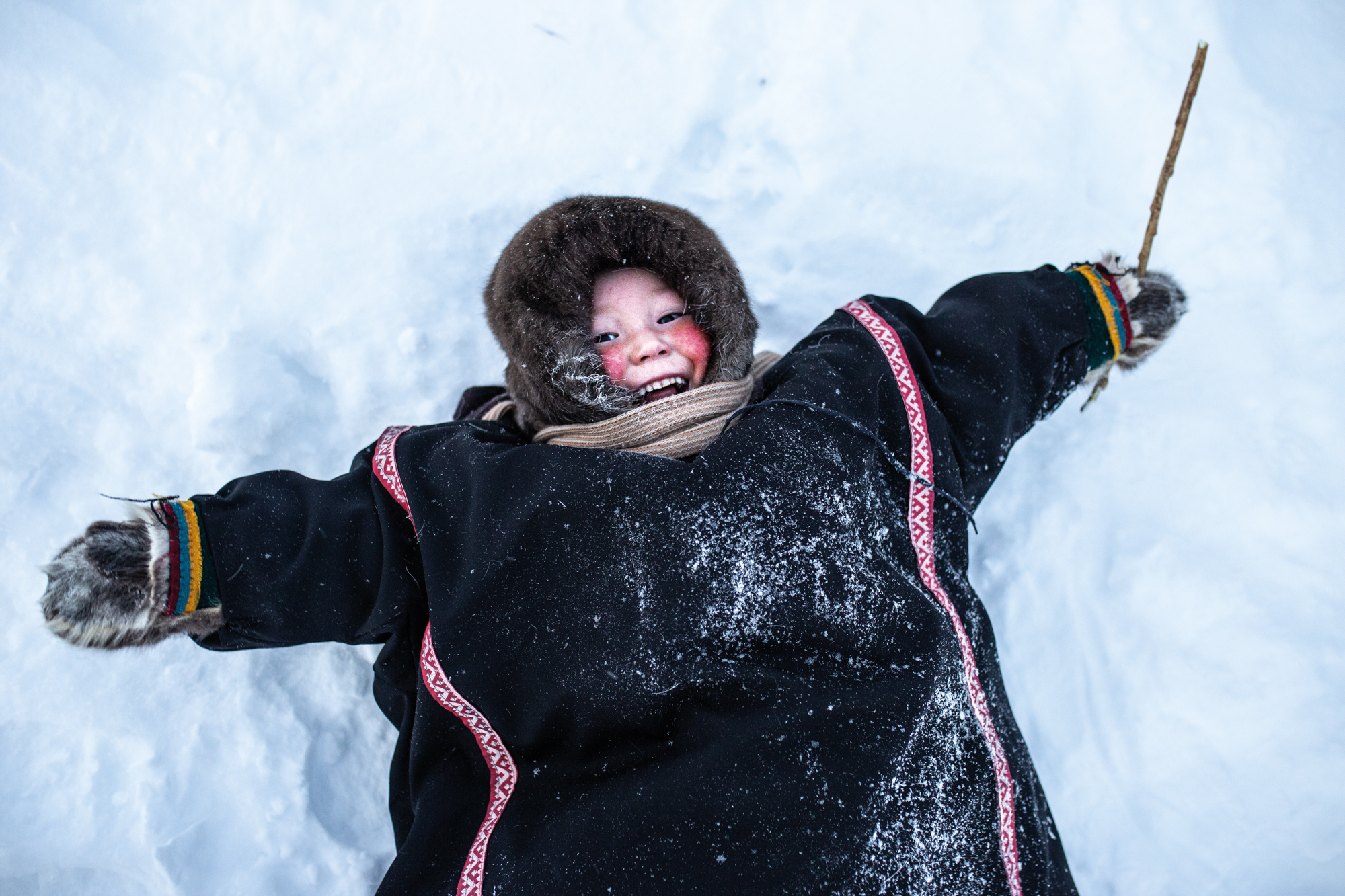
In your photographic trips you have always traveled to warm places, has this expedition put you to test?
Definitely. Siberia is a very complicated journey, you cannot rely on structures, be-cause there are none, so if you go there you must necessarily stay and live with Nenets: I have been with them for almost two weeks of travel. It may seem like a little, but I assure you that under those conditions, to which we are not used to, one week can be perceived as an eternity. I should have found temperatures around -20, -25 Celsius degrees at most, but an unexpected bad weather caused the thermometer to drop to -50 after the first two days. Shooting at those temperatures is really challenging: it is tiring and painful for the body, but also complicated for the equipment itself.
You had to be very fast I guess.
Up to -40 the camera still worked, but at -50 the viewfinder froze becoming unusable: with gloves and mittens it became very difficult to remove the ice that accumulated in a very short time, the screen was constantly covered with sleet, the lenses sizzled, the focus began to blow and the battery really lasted nothing. A challenge against time practically: the autonomy of the batteries, at those temperatures, is 4-5 minutes. I kept the spare ones in the pockets of my pants, in order for them to warm up a little by being closer to the body, when the others were exhausted I changed them, I shoot for another 5 minutes and then changed them again.
This for me was the first trip in such an environment and, however tiring and painful, it was one of the most incredible experiences I have ever had in my life.
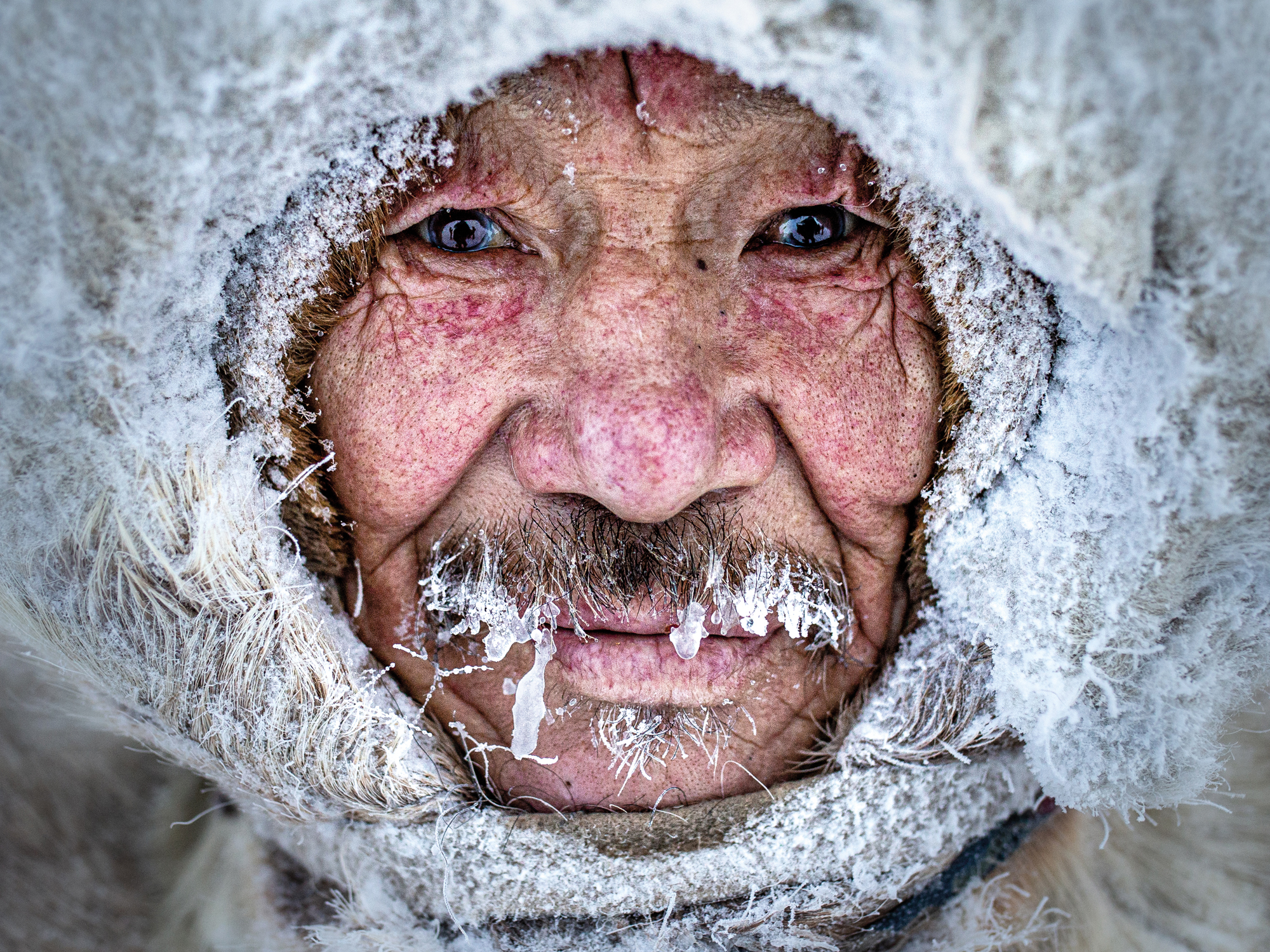
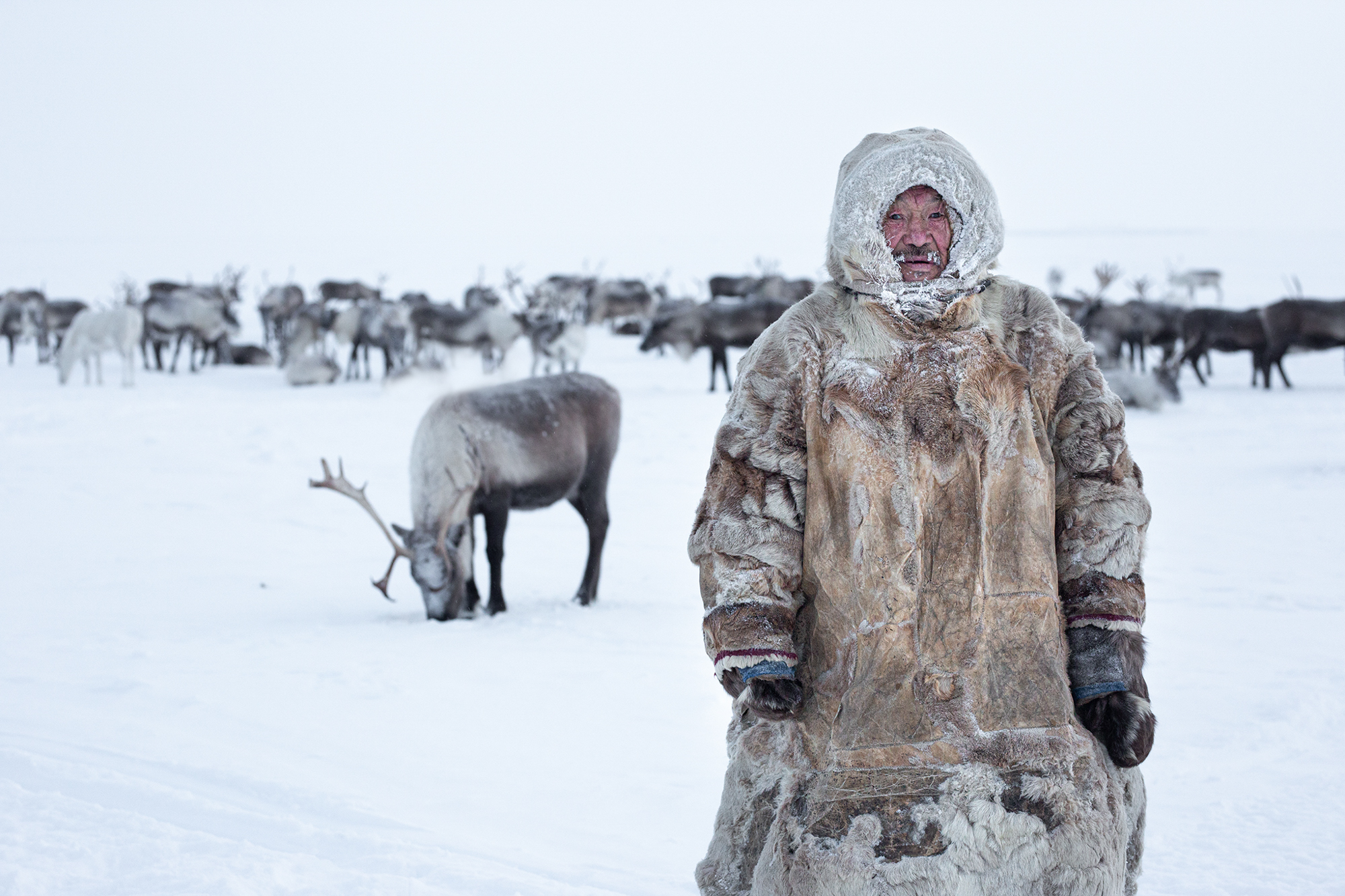
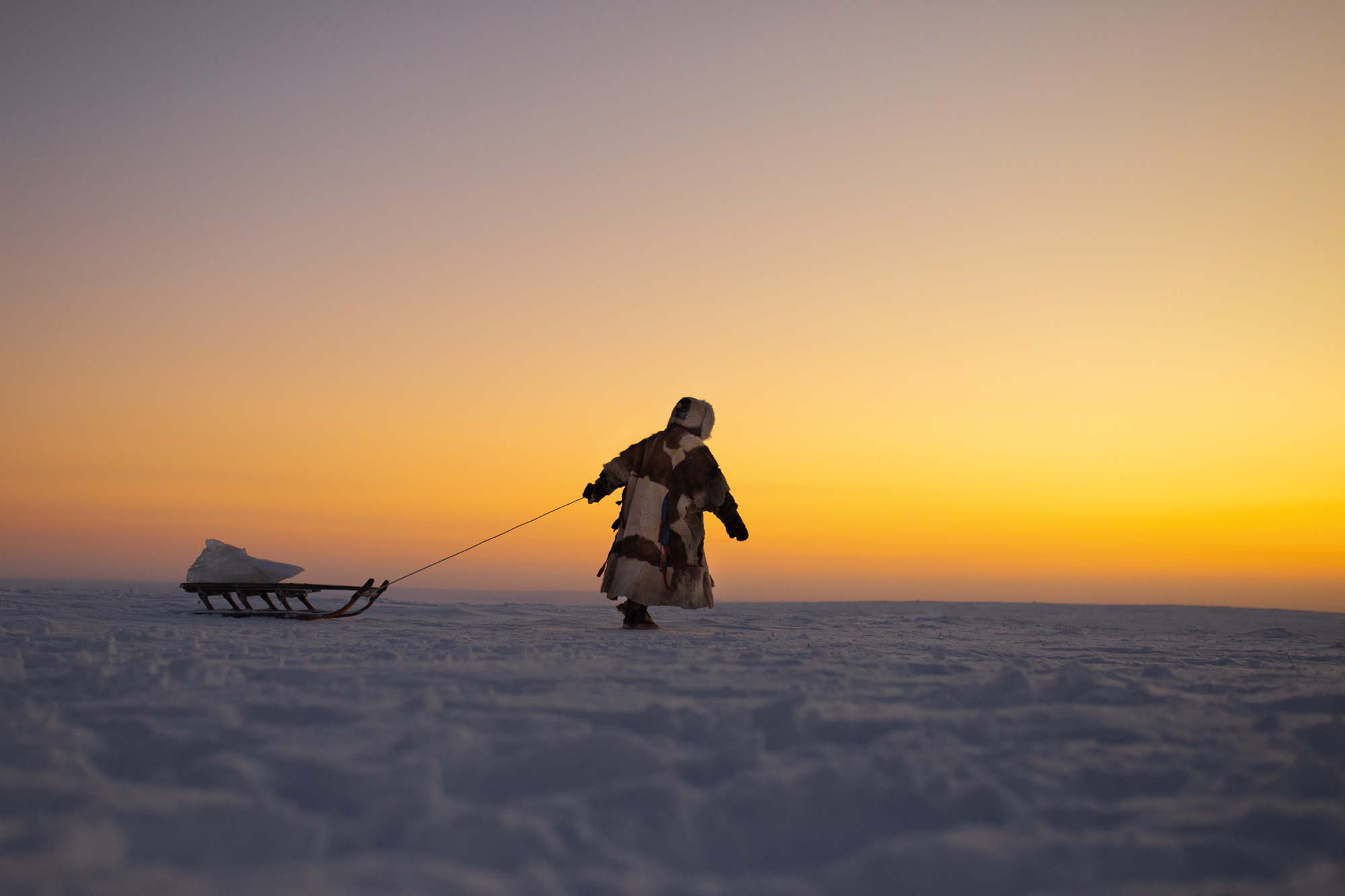
The landscape you faced must have been alienating sometimes…
It is an almost lunar scenario: an infinite white space that is lost visibly and, above all, is shrouded in absolute silence. White expanses as far as the eye can see with nothing around. One of the shots that I like most of this trip portrays a woman walking in this white expanse that almost merges with the sky: it is almost evening and there is the moon on the horizon. I imagined that I would see some crazy places: what I didn’t know is that the trip to Siberia would be a life experience that went far beyond a simple photographic report.
How do Nenets live?
Their life is really simple: they are reindeer breeders, fishermen, and then live a lot of barter. In winter, however, their day is very short: it focuses on the hours of light, which for most of the year do not exceed 4, 4 and a half hours. In this period of time, most of the activities are concentrated, from collect-ing the wood to cleaning the chum, which is their type of tent.
How do they protect themselves from the cold?
Mainly with reindeer skin: it is the material of which their clothes are entirely made of, but even blankets, the covering of the chum, boots and mittens are made with reindeer skin. Each family has its own traditions in this sense.
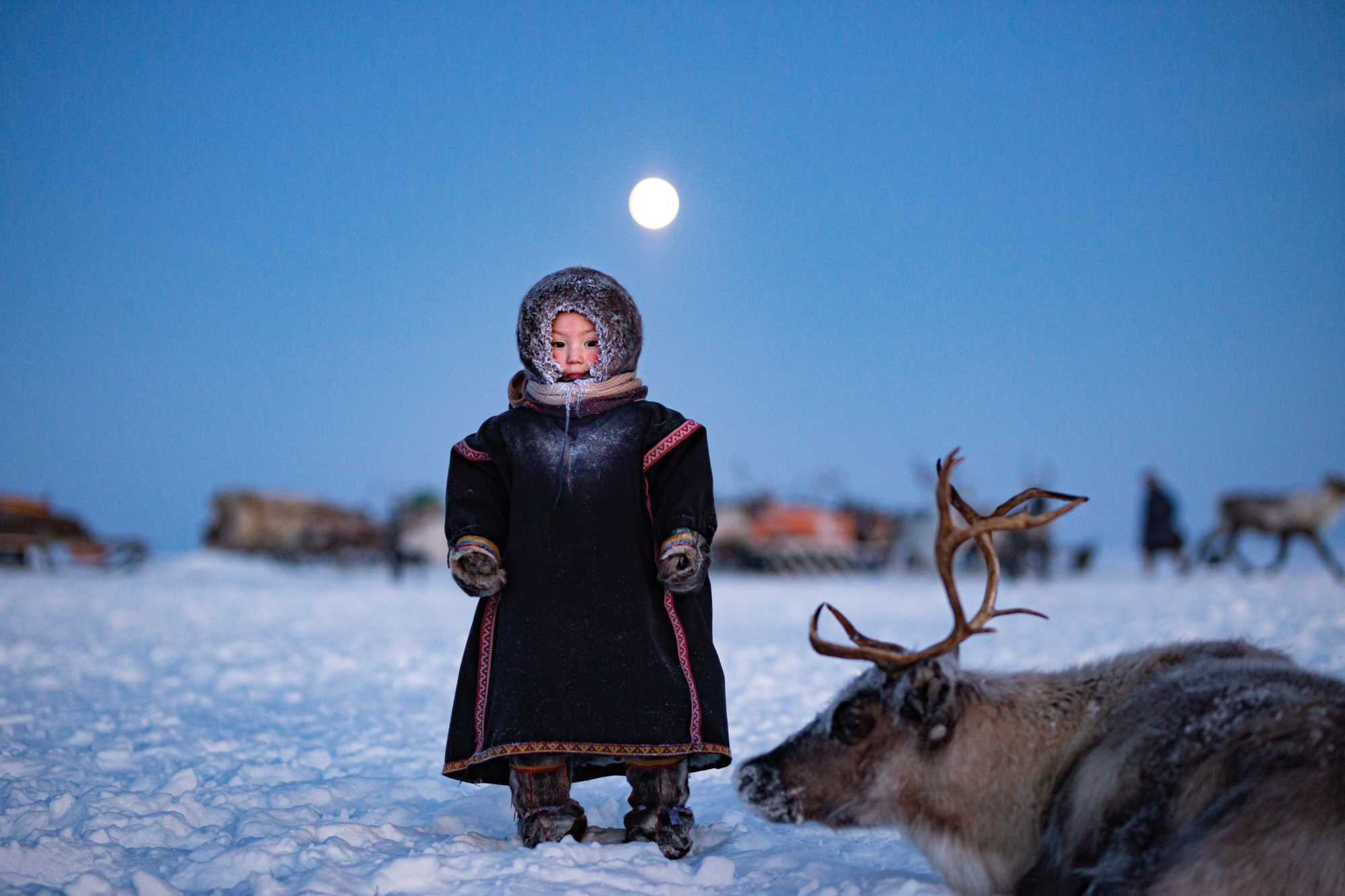
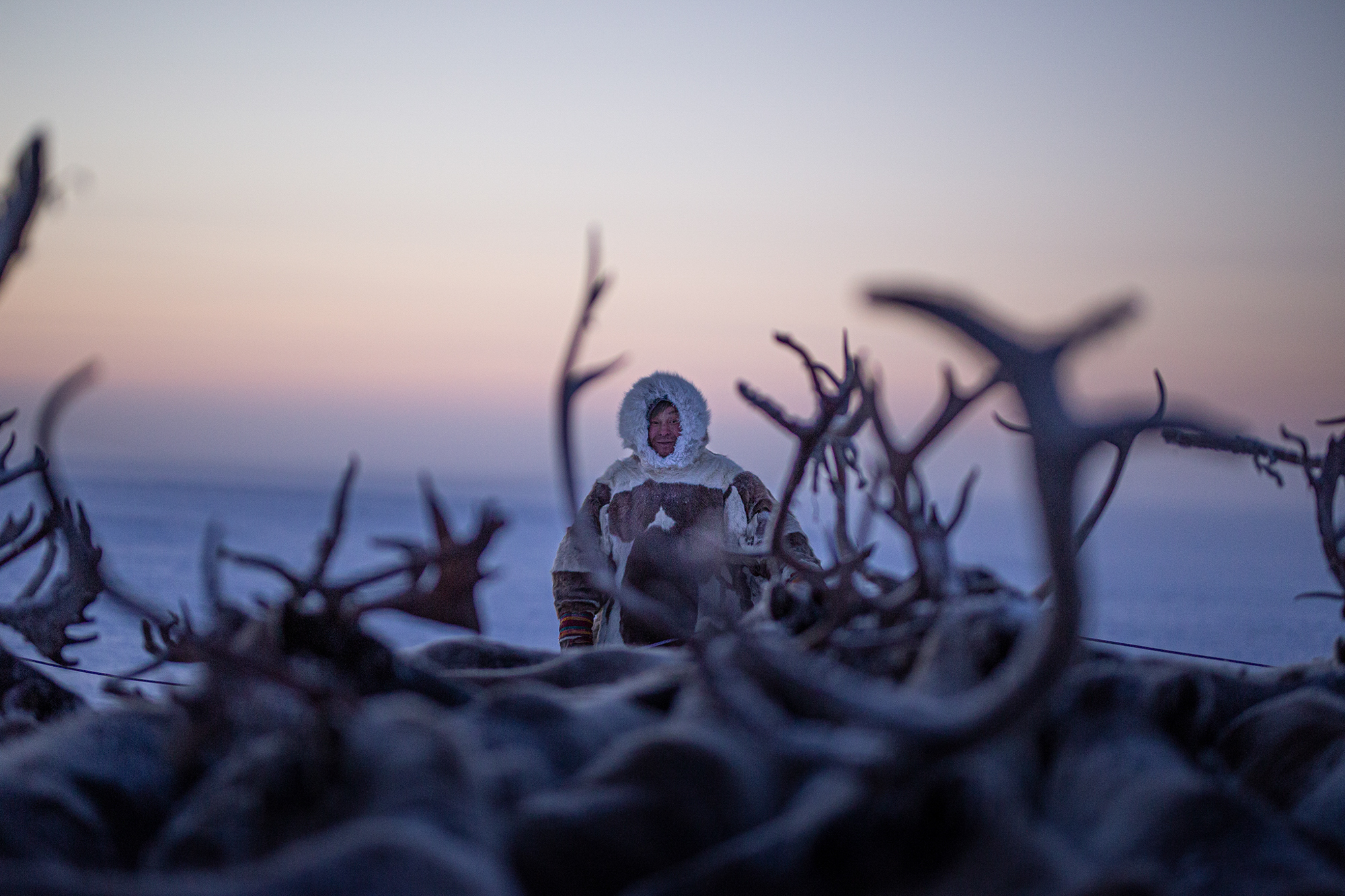
Through your photos you’ve told very well the effect of the cold on the lives and bodies of Nenets: very red cheeks, frozen hair and very deep wrinkles. Is there any other aspect that you have discovered through your lens?
What I wanted to convey is that these are people who live in very harsh conditions for most of the year, but they adapt in an incredible way. Another aspect that fascinated me is fishing, or how they manage to obtain drinking water. Which, of course, do not have and cannot get from snow, which you can drink in emergency conditions but not in the long run because it lacks minerals and all the nutrients we need. From the same lake in which they go fishing, they obtain blocks of ice and then melt them by heating them in the chum to get water to drink.
How do they relate to you?
Initially the family that hosted me was very quiet, even life inside the chum was quite separate: they studied me, let’s put it this way. Plus, they don’t speak any language other than their own, so we tried to communicate with gestures, which we as Italians do quite well I must say. Once the ice broke, I was able to make myself understood, and also ac-cept, I think. Just looking into each other’s eyes sincerely is a great communication tool. And if the adults were a little more wary at first, with the children it was all really immediate. Nenets don’t have much and the children play in a simple way, as we used to do in the past: they throw snowballs, fight, chase each other. For me it was a bit like going back to the eighties, certainly in more ex-treme conditions, but it has been a while since I have seen children so fo-cused on themselves and their friends. Getting into a relationship with them was perhaps easier because they have fewer barriers: I immediately bonded very deeply with Olga, who is the girl with very red cheeks whose photo was chosen for the cover of Sidetracked.
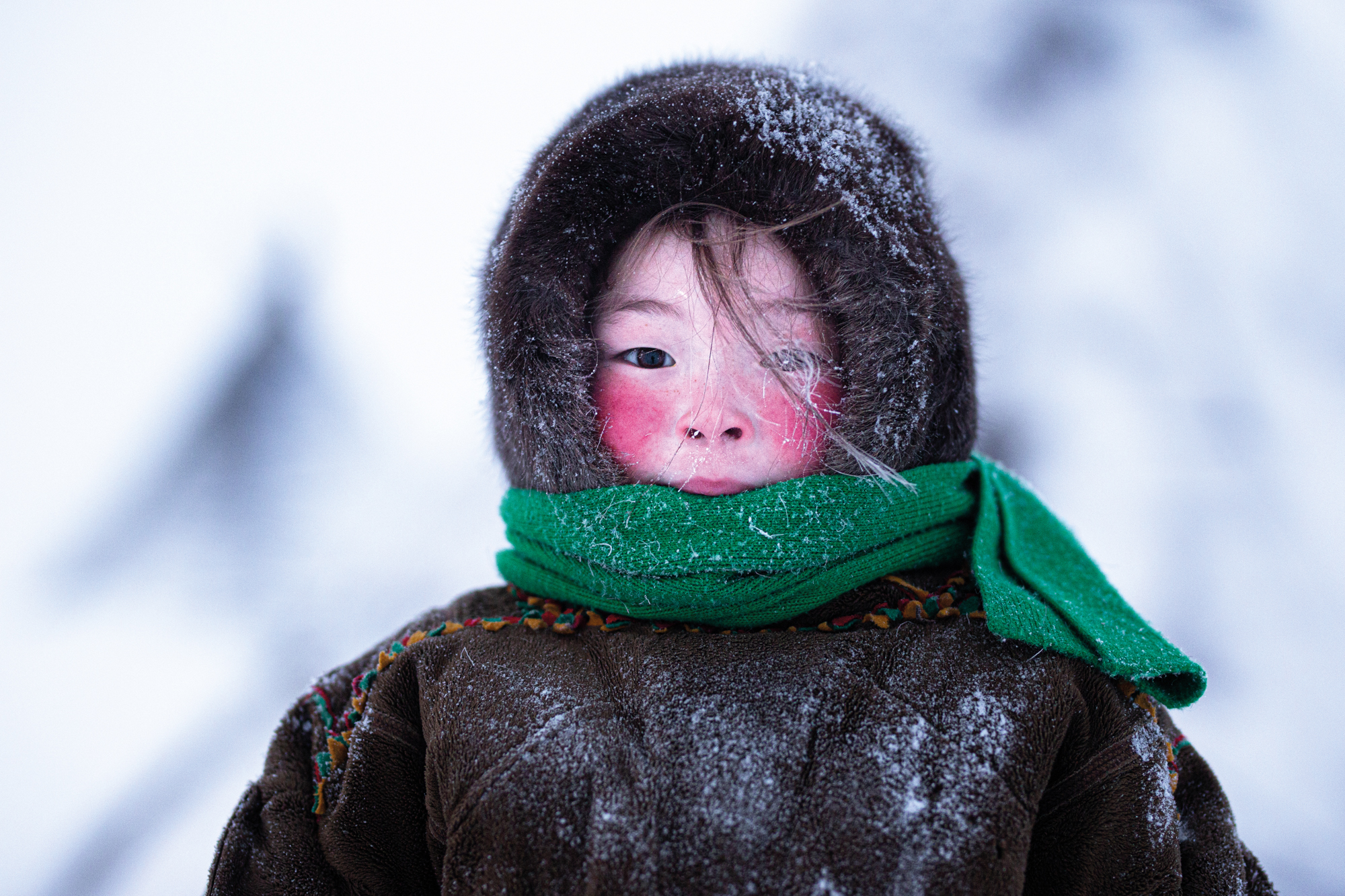
For Nenets it seems as if time has stopped and surely for a Westerner coming into contact with these populations is something enriching, however, is there no risk, by overexposing their image, that the community will sooner or later be distorted?
I believe that they are happy to be told: then we must keep in mind that the journey in their lands is very hard, you cannot go there without a guide who, at least in my case, has always insisted a lot on being respect-ful, also because they have remained very pure.
Do you think they are not attracted to modernity?
For Nenets school is compulsory up to the age of 19: the children leave their parents’ home at six, Olga, who is now five, will leave next year: they spend all the time in the nearest town and then, once their cycle of stud-ies is over, they choose whether to return to live in a nomadic way or to continue their life and studies in the city. What struck me a lot is the fact that most of them choose to go back.
In the West we are very attracted to the issue of “nomadism”, nowadays digital nomadism is especially cool. But the life of nomadic populations is actually very hard. How often do Nenets move?
Every ten days, on the other hand, following a very strange path: if we looked at it from above it would be like seeing the symbol of infinity drawn by their caravan. During the winter they move the camp continuously making the circle on the left and arriving more less at the beginning of spring at the junction between the two circles: here they leave the tools necessary for the winter and their heavier clothes, they hide them and then they travel the rest of the circle throughout the summer. Then they return to the junction point before winter and retrieve all their belongings.
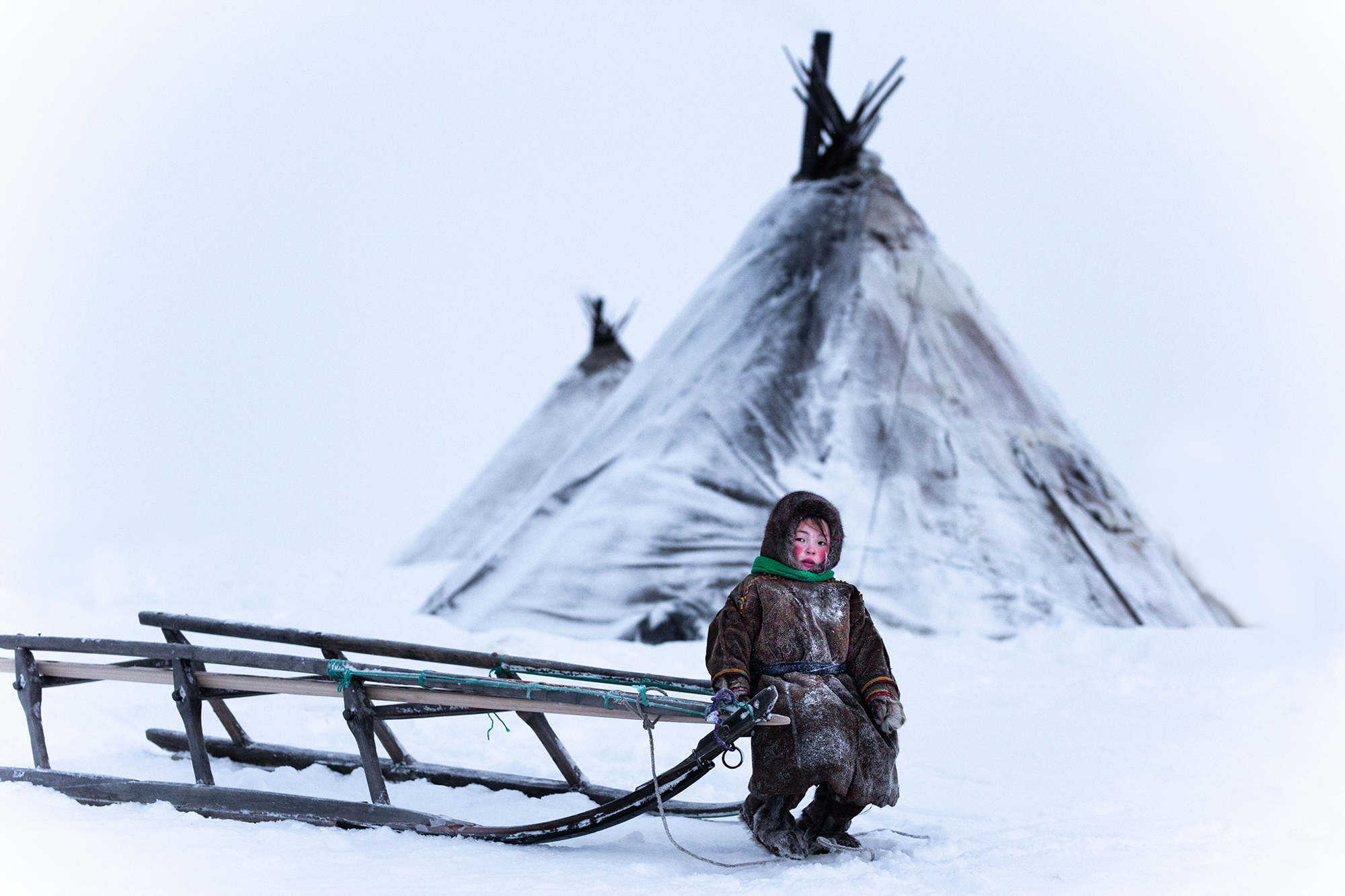
Do you think is there something that Nenets have taught you?
Simplicity: they really live with nothing. And I know it’s rhetoric, but it takes very little to be happy, we Westerners have terribly too much. A week with them made me rediscover the values of the families of the past: even just the fact, which is as basic as it is important, to worry about each other, to worry that everyone is well and has food. In our having too much, we also exploit the planet that hosts us too much.
Nenets are probably more respectful from this point of view…
Absolutely, they have a lot of respect for the territory in which they live. When they set the camp off, there is no trace of their passage, you see nothing on the ground.
Are you planning to go back visiting them? Maybe in the summer?
Definitely yes, even if the idea that has been buzzing in my head lately is to do a reportage on Mongolian reindeer breeders, it seems that they have a very intimate relationship with these animals, almost symbiotic, they have in fact earned the nickname of “reindeer men”. In Siberia, however, I will definitely want to go back sooner or later: when the snow melts the expanses of meadows that you can find in front of you are endless, it would change both the scenario and the daily life of Nenets, so the motivation is twofold.

